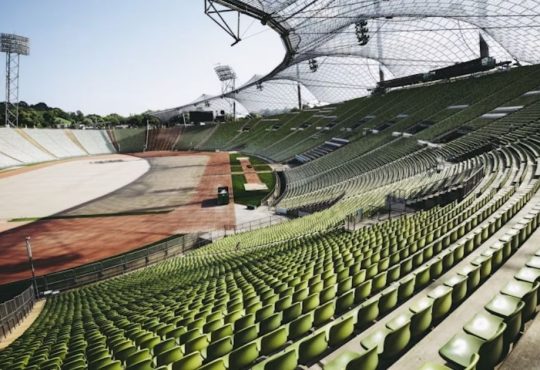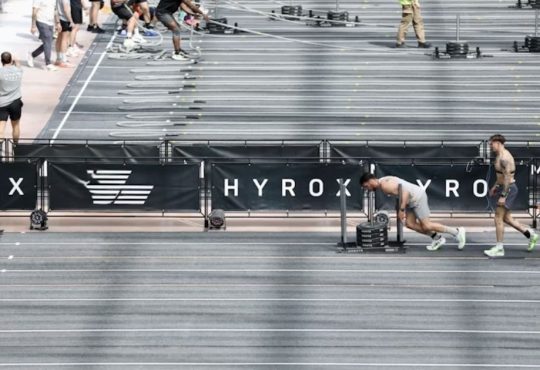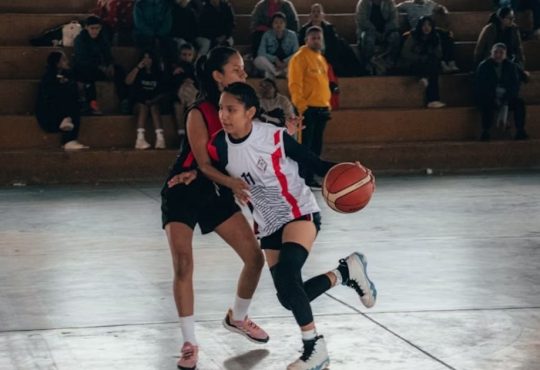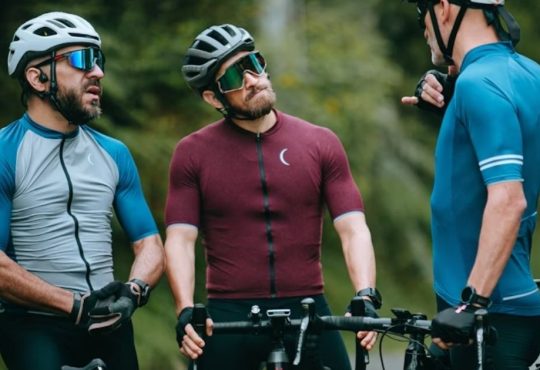Winning isn’t just about how hard athletes train—it’s also about how effectively they bounce back. Gone are the days when recovery meant just stretching, ice baths, or a day off. Today, cutting-edge athlete recovery hacks, such as cryotherapy, hyperbaric oxygen therapy, and infrared treatments, are transforming how athletes heal. By combining advanced science with performance data, these methods enable athletes to recover more quickly, prevent injuries, and prolong their careers.
The Rise of Data-Driven Recovery
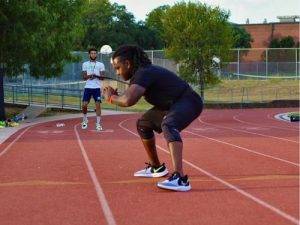
In modern sports, recovery has become just as important as performance itself. Gone are the days of generic cooldowns and standard rest routines. With biometric tracking and performance analytics, trainers can now pinpoint an athlete’s exact recovery needs in real time. For example, if data shows signs of muscle inflammation, targeted cryotherapy or massage might be prescribed. If oxygen levels are low, breathing exercises and oxygen therapy can be introduced to help improve oxygenation. Even subtle sleep imbalances can be corrected with personalized rest schedules or guided recovery protocols.
What makes this approach revolutionary is its precision. Data-driven recovery not only shortens downtime but also enhances the quality of rehabilitation by focusing on what the athlete’s body truly requires. Instead of guessing, teams can implement science-backed solutions that restore energy, prevent injuries, and extend careers. Ultimately, recovery becomes proactive rather than reactive—helping athletes stay consistently game-ready while maintaining peak performance levels throughout demanding seasons.
3 Game-Changing Athlete Recovery Hacks for Peak Play
Cryotherapy
Cryotherapy has rapidly moved from being a novelty to a staple in professional sports recovery. Athletes willingly step into chambers chilled to below –100°C, enduring just a few minutes of extreme cold to reap significant benefits. The icy blast constricts blood vessels, reduces inflammation, eases muscle soreness, and kickstarts circulation once the body warms again. The result? Faster recovery, improved energy, and reduced downtime between training sessions or competitive games.
What’s new is how data is taking cryotherapy from a “one-size-fits-all” routine to a personalized science. Performance analytics and biometric tracking now help determine not only whether an athlete needs cryotherapy but also the precise duration and frequency of sessions. For example, a sprinter after an intense interval workout may require shorter but more frequent treatments, while a basketball player recovering from heavy minutes on court might benefit from longer, less frequent sessions. By tailoring cold therapy to workload and recovery needs, teams can maximize results while minimizing risks. In short, cryotherapy has evolved from simply freezing fatigue away to becoming a fine-tuned recovery strategy backed by data.
Hyperbaric Oxygen Therapy
Hyperbaric oxygen therapy (HBOT) has transitioned from treating divers with decompression sickness to becoming a high-tech recovery tool for elite athletes. Inside a pressurized chamber, athletes breathe pure oxygen at levels far higher than those found in normal atmospheric conditions. This hyper-oxygenated environment saturates the blood, delivering an increased supply of oxygen deep into tissues, where it accelerates healing, reduces swelling, and stimulates cell repair. For athletes, this means muscles bounce back faster, injuries recover more effectively, and endurance levels improve with less downtime.
What makes HBOT particularly powerful in modern sports is its integration with biometric tracking. Metrics such as oxygen saturation, muscle recovery rates, and heart rate variability (HRV) enable medical teams to tailor treatment sessions to each athlete’s unique needs. For example, a basketball player nursing a stubborn ankle sprain may benefit from a series of shorter HBOT sessions to reduce swelling, while a marathon runner recovering from the strain of 26 miles might require longer sessions for deep tissue oxygenation. By merging science with personalization, HBOT is no longer just a futuristic therapy—it’s becoming a cornerstone of data-driven recovery strategies that enable athletes to perform at their peak.
Infrared Therapy
Infrared therapy has established a significant role in modern sports recovery by utilizing targeted wavelengths of light to penetrate the skin, muscles, and even joints. Unlike traditional heat therapy, which warms the surface, infrared light penetrates deep into tissues at a cellular level, stimulating repair processes, reducing inflammation, and enhancing circulation. This makes it especially effective for treating stubborn soreness, speeding up recovery from muscle strains, and managing chronic joint pain that can limit training consistency. For athletes, the result is not only faster healing but also an overall improvement in mobility and readiness for performance.
What makes infrared therapy even more valuable today is its integration with recovery data. By analyzing biometric insights—such as localized muscle strain or circulation efficiency—trainers can direct infrared treatment precisely where the body needs it most, whether that’s a sprinter’s hamstrings or a tennis player’s shoulders. Beyond the elite level, the rise of portable infrared devices has brought this once-exclusive therapy into mainstream gyms, wellness centers, and even home routines. Athletes at all levels now have access to light-based recovery tools, making infrared therapy one of the most democratized innovations in sports science.
The Role of Data in Recovery Optimization
The true strength of modern recovery therapies lies not just in the treatments themselves but in how precise data guide them. Wearable devices and biometric trackers collect a continuous stream of information—heart rate variability (HRV), muscle fatigue indicators, sleep cycles, hydration levels, and stress markers—that paints a detailed picture of an athlete’s condition. Instead of applying a generic post-game routine, trainers and medical teams can now create targeted recovery strategies that address each athlete’s unique physiological needs. This data-driven approach shifts recovery from being reactive to proactive, helping prevent injuries before they surface.
The integration of data ensures every therapy session counts. For instance, athletes displaying elevated inflammation markers may be scheduled for cryotherapy, while those showing decreased oxygen saturation can benefit from hyperbaric oxygen therapy. Similarly, poor sleep quality may highlight the need for infrared therapy or relaxation-focused interventions. By aligning treatments with real-time recovery data, every decision becomes intentional, maximizing the effectiveness of each session. In essence, recovery is no longer a separate phase from training—it’s a carefully optimized extension of it, ensuring athletes remain at peak performance with minimal downtime.
Expanding to Everyday Athletes
What was once the domain of elite sports teams is steadily being adopted by everyday fitness enthusiasts. Recovery technologies that once required multimillion-dollar facilities—such as cryotherapy chambers or hyperbaric oxygen therapy—are now available in boutique fitness studios, wellness spas, and even compact, home-use devices. Infrared saunas have become a wellness trend, and portable cryotherapy tools make targeted cold therapy accessible after a challenging workout. This democratization of technology is reshaping how recreational athletes approach training, shifting recovery from a luxury to an essential part of fitness routines.
The rise of wearables has accelerated this shift. Smartwatches and fitness trackers now provide recovery insights that were once limited to specialized sports labs, such as heart rate variability, sleep patterns, and stress levels. Armed with this data, everyday athletes can make informed decisions—whether that means scheduling an extra rest day, booking a recovery session, or using portable devices at home. The result is a new era of fitness culture where recovery is no longer an afterthought but an integral part of progress. By mirroring professional approaches, recreational athletes can train smarter, recover more effectively, and reduce the risk of long-term injury—all without stepping into a professional locker room.
Challenges and Considerations
The growth of data-driven recovery isn’t without complications. Cost remains one of the most significant barriers, as therapies like hyperbaric oxygen sessions, full-body cryotherapy chambers, or advanced biometric systems can be prohibitively expensive for recreational athletes. Even as prices begin to drop and consumer-grade options become available, accessibility is far from universal, creating a divide between those who can afford high-tech recovery and those who cannot.
Another concern is the potential over-reliance on technology. While metrics provide valuable insights, there’s a risk that athletes may become too dependent on numbers, sidelining the role of intuition and body awareness. Long-term research on recovery methods, such as repeated cryotherapy or infrared exposure, remains limited, leaving open questions about their safety and effectiveness over prolonged use. Ethical considerations also come into play: when elite teams deploy advanced recovery tools that grassroots athletes can’t access, the competitive playing field becomes uneven. Balancing innovation with inclusivity, affordability, and health will remain critical as data-driven recovery continues to evolve.
The Future: AI-Powered Recovery Systems
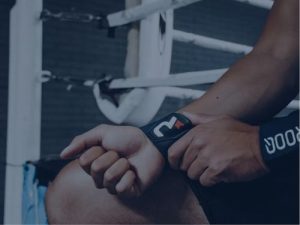
The next frontier of recovery is being shaped by artificial intelligence, promising to turn today’s innovations into fully personalized, predictive systems. AI platforms may soon analyze an athlete’s continuous stream of biometric data—from heart rate variability and oxygen saturation to sleep cycles and stress markers—and automatically prescribe tailored recovery protocols. Instead of relying on static schedules, recovery plans could evolve in real-time, dynamically adjusting to training loads, match intensity, and even environmental conditions such as heat or altitude.
Systems may also merge AI with other emerging technologies. Smart compression gear could be embedded with infrared therapy and adaptive cooling or heating systems, activated precisely when data signals fatigue or inflammation. Virtual reality may also find its place in recovery, offering immersive environments for mental relaxation, guided breathing, or cognitive reset after high-pressure performances. With predictive modeling, AI won’t just respond to injuries or fatigue—it could forecast them, preventing setbacks before they occur. This shift toward anticipatory care has the potential to redefine athletic longevity, ensuring athletes at all levels stay healthier, recover faster, and perform at their peak for longer.
Data-Driven Healing for Every Athlete
Cryotherapy, hyperbaric oxygen, and infrared therapy aren’t just flashy trends—they’re part of a larger shift toward smarter, data-driven recovery. By combining cutting-edge treatments with personalized data, athletes can recover faster, perform at a higher level, and reduce their risk of injury. Whether you’re a pro or a weekend warrior, the future of recovery is clear: smarter science, faster healing, and a stronger game.


